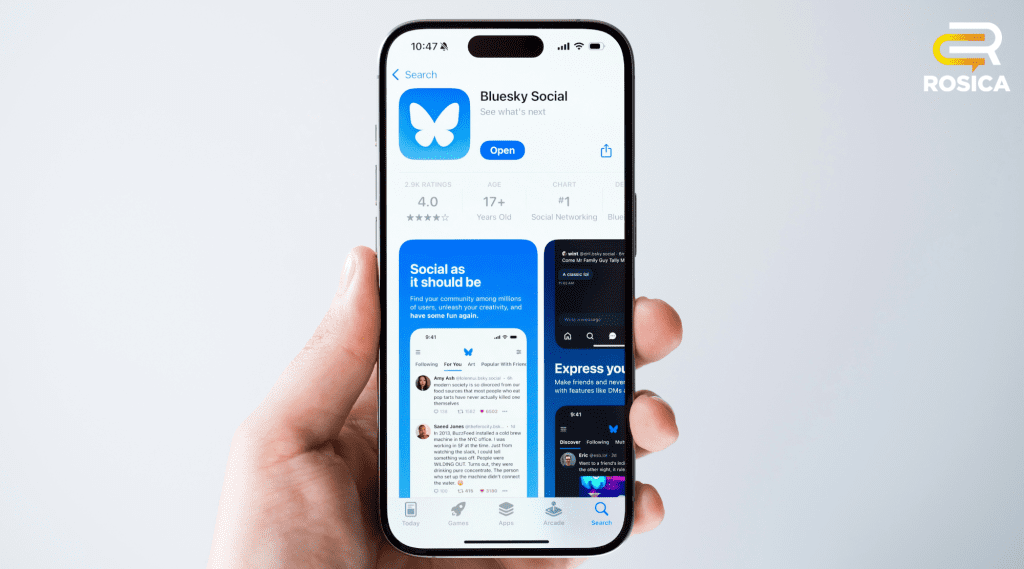Bluesky, the decentralized social media platform, has experienced significant growth, reporting over 25.9 million users at the end of 2024, according to the company’s year-end review. This surge in adoption highlights a growing shift in social media as users seek alternatives to traditional platforms like X (formerly Twitter) and Meta.
Built on the Authenticated Transfer (AT) Protocol, Bluesky offers a user-driven experience, allowing individuals to customize algorithms, manage their own servers, and engage with content more transparently. This approach challenges the centralized model of mainstream social networks, emphasizing control, moderation, and innovation in online interactions.
What is Bluesky’s purpose and how can it be used?
Bluesky’s primary goal is to provide an open and transparent alternative to centralized social platforms. Unlike traditional networks, which rely on opaque algorithms and corporate oversight, Bluesky enables users to take charge of their digital experiences. It offers a decentralized structure where users can choose their own servers, control algorithm preferences, and utilize enhanced moderation tools to foster safer communities. Although decentralization presents some challenges in platforms like Bluesky and Mastodon, we envision Bluesky addressing this in future changes to its algorithm.
Many users prefer the convenience of centralized platforms like Threads, which seamlessly integrate with existing social media ecosystems like Meta. To maintain relevance, Bluesky must find a balance between decentralization and ease of use to attract and connect broader audiences.
For education, healthcare, and animal health companies looking to expand their reach, Bluesky provides a unique opportunity to engage with communities in an authentic, personalized, and transparent manner. By leveraging the platform’s customizable algorithms, groups can tailor their content to target specific audiences organically (not just through ads) and ensure greater visibility. Additionally, joining or creating dedicated servers around specific causes or industries allows organizations to foster deeper engagement within niche communities. Since Bluesky is still growing, early adopters can establish a strong presence and build credibility before the platform becomes more saturated.
Why nonprofits should utilize Bluesky
To bolster nonprofit PR, Bluesky presents an opportunity to engage with younger, community-driven audiences in a less crowded digital environment. For nonprofits looking for an alternative to traditional social media giants, Bluesky presents an opportunity to reach dedicated and mission-driven people and communities.
The platform’s user base consists largely of transparency-focused individuals, making it an ideal environment for cause-marketing-based messages, education, and appeals. Since Bluesky is still growing, smaller nonprofits have a better chance of standing out without competing against large corporations that dominate all social platforms.
One of the biggest advantages for nonprofits on Bluesky is the ability to engage in meaningful, community-driven conversations without the noise and distractions of mainstream platforms. Unlike X, which has become increasingly polarized, Bluesky offers a safer, more moderated space that avoids politically charged controversies. This makes it easier for nonprofits to build trust and connect with audiences who value ethical engagement and transparency.
Additionally, Bluesky’s decentralized model allows organizations to have greater control over how their content is distributed and discovered. Customizable algorithms mean nonprofits can tailor their reach and engagement strategies more effectively, ensuring that their messages resonate with the right audiences. Early adopters may also benefit from establishing a presence before the platform becomes oversaturated, positioning themselves as leaders within the space.
By offering a more inclusive and moderated environment, Bluesky allows organizations to smartly connect with supporters while avoiding the challenges experienced on other platforms. For nonprofits, foundations, and NGOs, early involvement on Bluesky can be a strategic move, providing greater awareness in this refreshingly unique space. As the platform continues to evolve, its success will depend on bridging the gap between decentralization and user convenience—a challenge that could redefine the future of social networking.
What’s new with Bluesky?
To stay competitive, Bluesky continues to roll out features that enhance the user experience and its functionality. One major update is the introduction of the “Trending Topics” feature, which allows users to explore discussions based on their interests, like X’s trending function. This is designed to improve discoverability and engagement across the platform, helping users find conversations that are relevant and timely.
Another key development is Bluesky’s new funding round, projected at $700 million, to support platform improvements and infrastructure growth. This funding will likely fuel initiatives such as expanding the network’s reach, enhancing security features, and improving the user experience. With additional financial backing, Bluesky has the potential to further innovate and cater to more niche audiences.
Bluesky is also recognizing the video marketing content trend, launching a dedicated custom feed for video posts. This feature is designed to compete with the likes of TikTok, Instagram Reels, and YouTube Shorts, making the platform more attractive to content creators and younger users who favor dynamic and interactive media. With this addition, Bluesky is positioning itself as a more versatile social network, accommodating both discussions and visually engaging content. These updates reinforce Bluesky’s commitment to competing with major social networks while preserving its foundational movement towards decentralization and authenticity.
Bluesky’s rapid growth signals a shift in user preferences, particularly among those seeking more control, transparency, and alternatives to mainstream social media. While it still faces challenges—particularly in user accessibility and mass adoption—the platform’s recent updates indicate serious efforts to compete with industry social media marketing giants.

